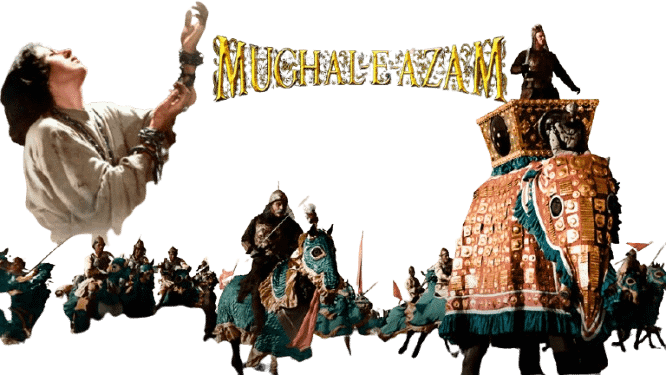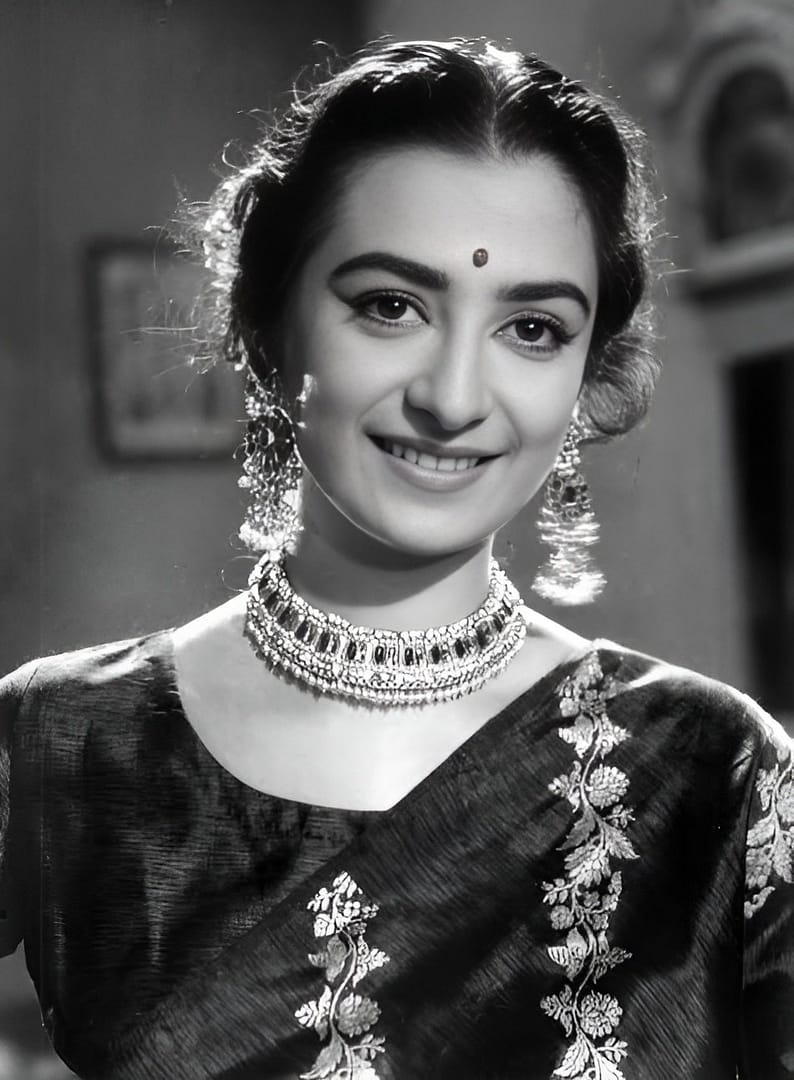Mughal-E-Azam Introduction: A Cinematic Monument

Mughal-E-Azam, released in 1960, is one of Indian cinema’s grandest and most iconic films. Directed by K. Asif and produced by Shapoorji Pallonji, it tells the tragic love story of Prince Salim (later Emperor Jahangir) and the courtesan Anarkali, set against the backdrop of the Mughal empire. More than just a film, it is a symbol of Indian cinematic ambition, opulence, and storytelling excellence.
The journey of Mughal-E-Azam was as dramatic and enthralling as its storyline—taking over a decade to complete, navigating casting upheavals, political turbulence, and technological revolutions. Below is a deep dive into the casting journey, the making of the film, and the behind-the-scenes stories that made Mughal-E-Azam a legend.
Mughal E Azam Casting Details: A Dream Ensemble
- The Role of Prince Salim – Dilip Kumar
Initially, several actors were considered for the role of Salim, including Sapru and Chandramohan. But after years of delays and rewrites, K. Asif chose Dilip Kumar, the reigning “Tragedy King” of Hindi cinema. His intense screen presence, understated performance, and tragic aura made him ideal for the rebellious prince.
Interesting Fact: Dilip Kumar and Madhubala were involved in a real-life romance that had soured by the time of filming. This tension added to the emotional complexity of their scenes, especially in romantic and confrontation moments.
- The Role of Anarkali – Madhubala
One of the most iconic casting choices in Indian cinema, Madhubala brought sensuality, elegance, and tragedy to the role of Anarkali. Despite suffering from a congenital heart condition, she delivered a physically and emotionally demanding performance with remarkable grace.
Casting Drama: K. Asif had originally planned to cast Nargis, Suraiya, or even Noor Jehan (pre-Partition), but finally chose Madhubala after seeing her performance in Mahal (1949).
- Emperor Akbar – Prithviraj Kapoor
The towering figure of Prithviraj Kapoor as Emperor Akbar added a regal and authoritative presence to the film. His deep voice and imposing demeanor brought gravitas to the character of the just yet stern father.
Language Preparation: Prithviraj Kapoor underwent special training in classical Urdu diction and body language to portray the Mughal emperor authentically.
- Supporting Cast
- Durga Khote as Maharani Jodha Bai – She lent dignity and motherly warmth to the film’s emotional core.
- Ajit as Durjan Singh – Salim’s friend and general.
- Murad as Raja Man Singh – Loyal courtier of Akbar.
- Nigar Sultana as Bahar – The jealous court dancer competing with Anarkali.
The Making of Mughal-E-Azam: A Journey of Obsession
- A Film 15 Years in the Making
- Asif started the project in 1944 with Chandramohan and Nargis in the lead. The film, titled Anarkali then, was shelved due to Partition and funding issues. It was revived in 1951 with Shapoorji Pallonji’s backing and a new cast.
The final film was completed in over 12 years, involving multiple production halts, recastings, and set rebuildings.
- Budget and Scale
Mughal-E-Azam was the most expensive Indian film of its time, with a budget estimated at ₹1.5 crore (a massive sum in the 1950s). The film used:
- Real jewels and gold in costumes.
- Authentic Rajasthan marble for sets.
- Elephants and horses sourced from royal families for war sequences.
- Iconic Set Design and Art Direction
- The Sheesh Mahal (Palace of Mirrors) scene where Anarkali dances (“Pyar Kiya To Darna Kya”) took two years to build, with 500,000 pieces of Belgian glass.
- Lavish Mughal courts, forts, and battlefields were constructed in Bombay studios and Rajasthan.
Art Director: M. K. Syed worked on historical accuracy, taking inspiration from Mughal miniature paintings and architecture.
- Costume Design
- Dresses weighed up to 30 kilograms, especially for the female actors.
- Each costume was researched and tailored to reflect Mughal fashion.
Costume designers collaborated with royal historians and textile experts, with fabrics sourced from Banaras and Hyderabad.
- The War Sequence
The war between Akbar’s army and Salim’s rebellion was shot on an epic scale with:
- Real cavalry and foot soldiers from the Indian Army.
- Battle scenes choreographed with real weapons and elephants.
- Location shoots in Rajasthan deserts.
The scale rivalled Hollywood epics of the time like Ben-Hur and Spartacus.
Music: A Soulful Legacy
- Naushad – The Musical Maestro
Composer Naushad delivered one of the most enduring soundtracks in Indian cinema. He used classical ragas, live orchestras, and traditional instruments like sitar, tabla, sarangi, and shehnai.
- Memorable Songs
- “Pyar Kiya To Darna Kya” – sung by Lata Mangeshkar, filmed in Sheesh Mahal with groundbreaking acoustics.
- “Mohe Panghat Pe Nandlal” – a classical dance number by Madhubala.
- “Bekas Pe Karam Kijiye” – shows Anarkali’s agony and desperation.
All songs were pre-recorded, and lip-syncing was meticulously rehearsed to match live performances.
Behind-the-Scenes: Struggles, Conflicts, and Triumphs
- Madhubala’s Health
She suffered from ventricular septal defect (a hole in the heart) and filmed strenuous scenes—including being chained and buried alive—despite doctor’s warnings.
Her real-life pain added pathos to her portrayal.
- Dilip Kumar and Madhubala’s Broken Romance
Their personal breakup affected their chemistry. While their love scenes remained iconic, off-screen tension was palpable. They reportedly spoke only during takes, creating emotional intensity in confrontational scenes.
- Political and Religious Sensitivities
The film’s depiction of royal family conflict and Mughal heritage required clearances and edits. K. Asif consulted historians to ensure accuracy and to avoid offending any community.
Some right-wing groups had issues with the glorification of the Mughal period, but the film emerged unscathed.
- Colorization and the Partial Technicolor Gamble
While most of the film was shot in black-and-white, the Sheesh Mahal song “Pyar Kiya To Darna Kya” was filmed in Technicolor, using imported film stock.
The cost was astronomical, but it became a landmark moment in Indian cinema. Later, the entire film was digitally colorized and re-released in 2004.
- K. Asif: The Visionary Director
- Asif was known for his uncompromising perfectionism. He:
- Took hundreds of retakes to capture the right emotion.
- Waited for ideal lighting and sound.
- Reshot scenes if even a minor detail was off.
His obsession led to conflicts with producers, but also ensured the film’s place in cinematic history.
Release and Reception: A Nation Transfixed
- The Premiere
Held at Maratha Mandir in Mumbai, the premiere was a royal affair with:
- Red carpet treatment.
- Invitations sent to Presidents, Governors, and royals.
- Decor inspired by Mughal architecture.
The theatre was redecorated with mirrors, chandeliers, and velvet curtains to match the film’s opulence.
- Box Office Performance
- Ran for 3 years in Maratha Mandir (a record).
- Grossed over ₹11 crore in 1960 (equivalent to over ₹500 crore today).
- Became the highest-grossing Indian film at the time.
- Awards and Legacy
- National Film Award for Best Feature Film (Hindi).
- Filmfare Awards: Best Film, Best Director (Asif), Best Cinematography, Best Dialogues.
- Cited as India’s answer to Hollywood epics.
Cultural Impact and Legacy
- Influence on Cinema
Mughal-E-Azam inspired generations of filmmakers to pursue grandeur. It set new benchmarks in:
- Historical storytelling
- Production design
- Musical narrative structure
- 2004 Colorized Re-Release
After K. Asif’s death, his son and Shapoorji Pallonji remastered the film in color and Dolby surround sound.
The color version reintroduced the film to a new generation, becoming a massive hit again.
- Museum Exhibits and Theatrical Adaptation
Props, costumes, and scripts from the film are displayed in museums and exhibitions. In 2016, a Broadway-style musical adaptation was launched in India and abroad.
Conclusion: The Timeless Glory of Mughal-E-Azam
Mughal-E-Azam is not just a film—it is a cultural monument that embodies Indian cinema’s grandeur, perseverance, and artistry. Its saga behind the camera is as compelling as the story it tells. From intense real-life drama and artistic obsession to landmark technological achievements, the making of this film is the stuff of legends.
Six decades later, Mughal-E-Azam remains the gold standard of epic filmmaking in India, a tribute to its makers’ ambition, its cast’s commitment, and the audience’s undying love.




3 thoughts on “Mughal-E-Azam Empire Akbar & Jahangir”